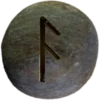Last Updated on November 25, 2024


Nafnaþulur (pronounced: NAHV-nah-thoo-lur) translates to “The Enumeration of Names.” This unique section appears at the end of Skáldskaparmál in Snorra Edda or Prose Edda. It provides extensive lists of names for gods, giants, dwarves, and other beings in Norse tradition. The name can also be spelled Nafnaþulur or Nafnaþulir, and it serves as an important linguistic and cultural resource.
The lists in Nafnaþulur include kennings, epithets, and alternate names for significant figures, like Odin and Thor, and natural elements, like rivers and weapons. These poetic elements helped skalds (Norse poets) craft verse and maintain oral storytelling traditions. For example, Odin is referred to as “Allfather” and “Ygg,” while Thor has titles like “Thunderer” and “Sif’s Husband.” Each name carries specific meanings, adding layers of interpretation to the stories and poems.
This section preserves a wealth of information about the symbolic language of the Norse. The catalog provides not only names but also insight into the cultural importance of naming. Names held power and reflected the essence of the person, object, or place they described. Nafnaþulur complements the narrative sections of Skáldskaparmál by serving as a reference for poets seeking inspiration and precision in their work.
Despite its somewhat technical nature, Nafnaþulur offers fascinating glimpses into the worldview and language of the Norse. It highlights the intricate relationship between storytelling, identity, and the poetic traditions that bound communities together.
Elder Futhark Runes Associated with Nafnaþulur
The Ansuz and Laguz runes ![]() resonate with Nafnaþulur. Ansuz, representing communication and wisdom, reflects the importance of names in storytelling and poetry. Laguz, symbolizing flow and intuition, connects to the fluid creativity needed to craft kennings and interpret names. Together, these runes reflect the linguistic and imaginative depth of Nafnaþulur.
resonate with Nafnaþulur. Ansuz, representing communication and wisdom, reflects the importance of names in storytelling and poetry. Laguz, symbolizing flow and intuition, connects to the fluid creativity needed to craft kennings and interpret names. Together, these runes reflect the linguistic and imaginative depth of Nafnaþulur.
Importance in Asatru
Nafnaþulur plays a vital role in Asatru by preserving the names of gods, giants, and other entities. These names offer deeper connections to divine and natural forces. Practitioners often explore Nafnaþulur for insights into the meanings and associations of sacred names. By studying this section, followers can better understand and honor the powers that shape their worldview, adding depth to rituals and poetic expressions.
